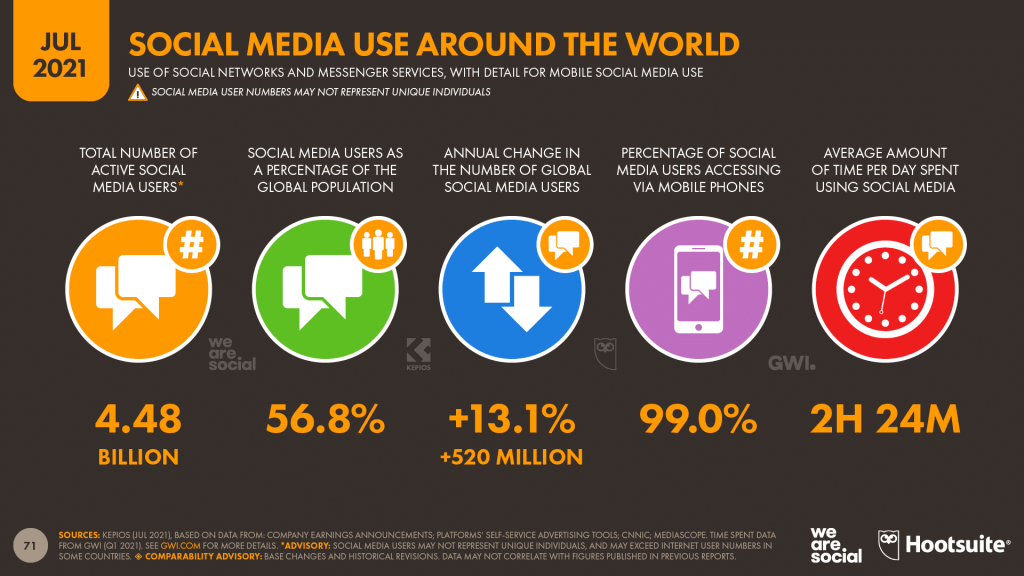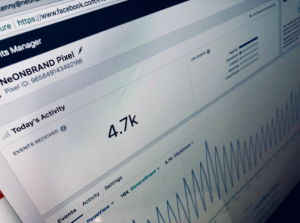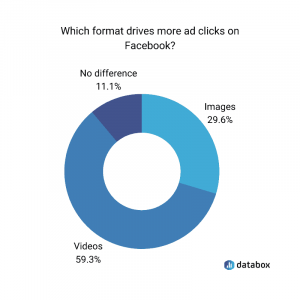Michael Calia - 09/22/2021
Optimizing social media advertising campaigns can mean the difference between strong performance and wasted marketing budget.
There are currently over 4.4 billion social media users in the world, with this number growing 13% in the last year alone. A medium noticing such significant growth creates significant opportunities for marketers. But audience volume is only one reason social media advertising is so effective. With heightened targeting capabilities, as well as seamless tracking and analysis, paid social media can be an essential tool for your marketing strategy. However, there are certain things to know when constructing strong advertising campaigns on different social media platforms. In this blog, we’ll give you four tips to optimize your paid social media advertising campaign.

The growth of social media has made it an effective advertising platform for marketers. Source: Hootsuite
Identify Specific Objectives
When spending marketing budget on social media ads, it’s crucial to first know exactly what you want to achieve with each campaign. Social media platforms have formats dedicated to achieving specific goals, such as:
- Website traffic – Optimizes ads to reach people who are likely to click on links within posts and ads that take them to landing pages outside of the social media platform.
- Engagement – Targets people who are likely to interact with ads via social actions such as likes, shares and comments, as well as other clicks on the post or ad itself.
- Video Views – Specifically for video content, these ads will be shown to people who are likely to watch videos on social media platforms, maximizing view counts from qualified users.
- Brand Awareness – Will reach as many relevant users as allowed by your budget with the goal of having people see and remember your business.
- Conversions – If your goal involves any sort of lead generation, conversion ads will aim to reach people who are likely to fill out forms with contact information to access content, sign up for events and more.
Another reason to identify your campaign objectives is that it will allow you to better construct the ads. When crafting copy, choosing imagery and selecting the proper medium for your ad, keeping the specific objective in mind will help you piece the aspects together to achieve the best results possible. Including clear calls to action (CTAs) can mean the difference between someone interacting with an ad as desired and someone scrolling past it.
Utilize Tracking and Conversions
 As social media platforms have evolved, advertising capabilities have been enhanced to allow marketers to track more data and build more effective campaigns. Two of the most influential additions to the social media advertising repertoire are the LinkedIn Insight Tag and the Facebook Pixel. These simple lines of code can be added to a web page to allow marketers to track user activity across the website and link that data to Facebook or LinkedIn accounts. While there are limitations on what can be tracked due to privacy restrictions, which I’ve discussed in a previous blog, one of the most valuable uses for these assets is retargeting. By placing a Pixel or Insight Tag on your website, you will be able to build audiences within the respective social media platform based on users who visited said page. The benefit in implementing this strategy lies in the fact that retargeted website visitors are 43% more likely to convert. So, by planning campaigns that initially drive traffic with the goal of tracking enough data to retarget users, overall performance will be improved.
As social media platforms have evolved, advertising capabilities have been enhanced to allow marketers to track more data and build more effective campaigns. Two of the most influential additions to the social media advertising repertoire are the LinkedIn Insight Tag and the Facebook Pixel. These simple lines of code can be added to a web page to allow marketers to track user activity across the website and link that data to Facebook or LinkedIn accounts. While there are limitations on what can be tracked due to privacy restrictions, which I’ve discussed in a previous blog, one of the most valuable uses for these assets is retargeting. By placing a Pixel or Insight Tag on your website, you will be able to build audiences within the respective social media platform based on users who visited said page. The benefit in implementing this strategy lies in the fact that retargeted website visitors are 43% more likely to convert. So, by planning campaigns that initially drive traffic with the goal of tracking enough data to retarget users, overall performance will be improved.
This data can also be used to create lookalike audiences, targeting users whose activity is similar to those who viewed or taken an action on your website, expanding your campaigns’ reach to more users who resemble those that have already proven to be valuable to some degree. Both LinkedIn and Facebook allow you to create audiences based on page views, form fills, purchases, and any other specific interactions on a web page. This enables even more specified forms of audience building to widen the pool of targeted users without sacrificing quality.
Conversion tracking is another key part of measuring the effectiveness of your social media advertising. Without proper tracking set up, you won’t have any insight into your audience’s activity beyond what they do with your actual ads. Having hundreds of link clicks can mean nothing if you don’t know how many of those people actually filled out a form or made a purchase. Conversion tracking methods may differ by platform, but the most basic forms involve tracking users who visited a specific page only viewable by those who have made a certain action on a website or adding a certain event code to a page that’s triggered when people click a certain link or button. Analyzing the conversion data will also help determine how successful your campaigns have been in achieving this goal.
Recognize KPIs
Depending on your campaign’s objective, certain metrics will hold high importance and value in determining overall performance. While certain platforms have different definitions for metrics, they’re typically similar in how they measure awareness and interactions.
- Impressions – The amount of times your ad appears on someone’s screen
- Reach – The amount of people who see your ad
- Engagement – Typically includes all possible interactions on your posts, such as social actions, hashtag clicks, profile clicks, etc.
- Link Clicks – The amount of times people clicked on the link you’re driving them to
- Conversions – Often defined when building the campaign, but will typically include the amount of times users provided contact info to generate leads or made purchases
The hard metrics are worth keeping an eye on, as the goal of pretty much every campaign will be to maximize at least one of the above stats among your target audience. However, relying on them exclusively will not always paint an accurate picture of how strongly your campaigns are performing. Because of this, it’s usually best to monitor efficiency-focused metrics to get a better idea of how useful your targeting, budget and creative are:
- Click-through Rate (CTR) – Compares the number of clicks to the amount of impressions to determine the rate at which people who see your ad will interact with it. The higher the better, as higher CTRs imply that your audience targeting is effectively reaching the right people and they’re taking the desired actions on your ad.
- Cost per Click (CPC) – How many budget dollars are needed to achieve one click. Monitoring this throughout the campaign’s duration will give insight into how cost-effective your ads are. In addition to the copy and creative, this stat can also be affected by the targeting, as more competitive audiences can require more budget dollars spent to achieve clicks.
- Cost per Action (CPA) – This will typically measure the cost required for someone in your target audience to take a desired action on a page outside of the social media platform, such as conversions or purchases. This can measure how effective your targeting has been, in that reaching the most qualified and relevant users will yield high CPAs.
- Cost per Thousand (CPM) – Measures how much it would cost to generate 1,000 impressions with your ads among your target audience. This is often an important metric for campaigns designed specifically to raise brand awareness, as it measures how effective your ads are in reaching as many users as possible.
- Conversion Rate – Compares the amount of conversions to the amount of people who clicked on your link. While this can measure the targeting effectiveness, it can also provide insight into the user-friendliness of the site you’re promoting. An ill-designed landing page can turn users away after visiting, thus reducing your conversion rate.
When monitoring campaigns, keep track of how these metrics change over time. If your chosen KPI starts dropping, it could be a good sign that you’ll need to refresh creative or adjust your targeting to home in on a more qualified audience. Also, feel free to check out another recent 3E Public Relations blog that details some important social media advertising metrics.
Conduct A/B Tests for Creative

Videos drive more ad clicks than images on Facebook. Source: Databox
Ideally, you’ll have multiple options for copy and imagery to utilize in your social media advertising campaigns. The benefit in having variations lies in the ability to test different combinations to determine which ones yield the best results. This allows you to allocate budget toward better-performing ad variations, enabling a more cost-effective campaign. For example, if stock imagery is being used, consider using images featuring people of different genders and ethnicities in different settings to see if it affects how your audience responds. You can also compare the stock photos with more vector-style imagery to see if performance differs.
The power of video also can’t be denied, as videos generate the most ad clicks on Facebook. Including still-image and video ads would be a strong way of diversifying your ads and determining what resonates best for your specific audience. Visuals are crucial aspects of social media advertising campaigns, as they can help your ads stand out in a sea of text and pictures as people scroll through their feeds.
Copy also plays an integral role in social media marketing campaigns. While the goal should always be to lead with the most important or enticing details and keep everything concise, certain audiences and industries can have varying preferences when it comes to how much they want to read in social media ads. Utilizing combinations of short- and long-form copy can help determine what ultimately results in more engagement or conversions. This also applies to how your ads are being viewed, as shorter copy is often preferred on mobile devices, which is how most Facebook users access the platform. If there are multiple aspects or selling points of the product or service you are selling, use different forms of copy to highlight each and determine what is most attractive. For example, if you sell athletic apparel that is durable, keeps you warm, and is made with sustainable materials, consider making each aspect the focus of its own ad. By comparing the ads’ performance, you can determine which one potential customers found most relevant or enticing. Shuffling between different CTA language will also help you narrow down the best possible language for achieving your goals. Whether you want people to visit a website to learn more about hour product, see where it is available, or order it directly, make that clear and concise.
The growth of social media has created an effective platform for marketers to reach highly specified targeted audience through paid advertising. Creating a sound social media advertising strategy can help businesses reach new customers and accurately track the success of their campaigns. This is especially true for reaching younger demographics, as 49% of Millennials and 54% of Gen Z say social media is their preferred channel for ad influence. But without proper execution, your social media marketing strategy can fail to hit the mark, resulting in wasted budget dollars. To learn more about how to effectively use social media in your marketing and advertising strategy, head to our website or send me an email.
